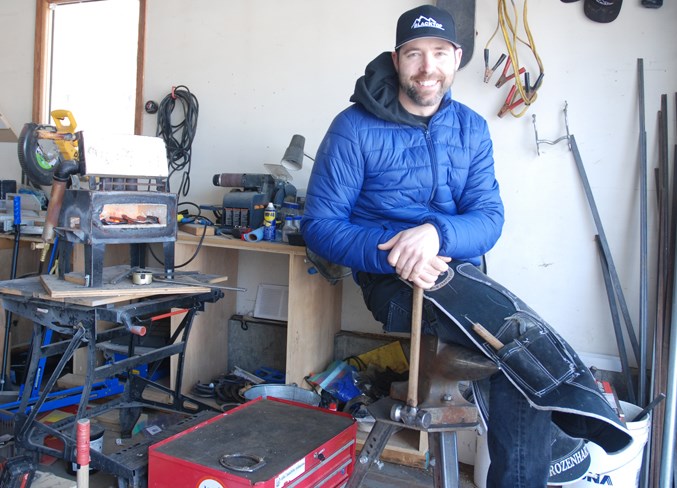Participating in the annual Alberta Farrier Championship was for a local horseshoe maker more about developing skills than competing for first place.
“For me, it was more about learning and improving than competing and winning titles,” said Josh Rozenhart, who was among dozens of horseshoe makers who attended the event hosted on March 1-2 at the Lausen Indoor Arena, which is located about 15 kilometres south of Strathmore.
“Education through competition, that’s really what it is.”
Regardless of whether he’s shoeing a horse in an everyday job or at a competition, he said the goal is to always be fully invested in doing the best possible work.
Rozenhart said a competition setting with judges and peers provides a unique opportunity to see others doing things differently while potentially picking up some industry tips that help to enhance his craft.
“It’s really great for the trade,” he said about the competition, which includes clinics and presentations by professionals with years of experience under their belts. This year’s featured clinicians and judges were Nathan Powell and Jason Rotramel.
Mingling among the masters is a good way to “ensure you’re doing the right thing when working,” he said, adding learning from others is an ideal approach to honing skills.
“There are a lot of good farriers in Alberta.”
Powell, a prominent Alberta farrier, is well known and talented, he said.
“Everyone was paying close attention to what he had to say.”
The sheer volume of information offered at the championship is why the event is so good to attend, he said.
“Even if you only take away 10 per cent, that’s 10 per cent you didn’t have before.”
There are three divisions in the competition, with the first serving as an introduction to the contest with plenty of students, including many from Olds College, entering. There were almost 30 in that category this year. The more intermediate-range second division, which Rozenhart competed in, had 16 contenders. The third and most difficult division had eight professional farriers with their experience ranging from several years to decades, he said.
“I don’t compete a ton,” said Rozenhart, who ended up placing second last.
“But I like to do at least one or two a year.”
Division 2 was broken down into four categories, including shoeing, forging, pairing as well as a speed class.
The shoeing portion involved a 75-minute effort to shoe a pair of hooves on a live horse with a specific type of shoe selected by a judge.
Forging required contenders to make two different types of shoes in 60 minutes, while the pairs class gave each competitor 50 minutes to make a pair of shoes a certain way.
The “eagle eye” speed class, as its name implies, offers only five minutes on the clock for each farrier, who has 10 seconds to look at a foot before making modifications to some shoes, and whichever end up fitting best wins, he said.
Rozenhart did not get an opportunity to practise in the lead-up to the championship as he had a packed week that involved a family trip to Fernie as well as preparing for the Sundre Minor Hockey Association’s initiation Huskies' home tournament, but he was nevertheless glad for the chance to participate.
A farrier since 2016, Rozenhart, who grew up in Edmonton, began to forge a new path a bit later in life.
“I was a city kid for a long time,” he said, adding that meeting his future wife — a farm girl — introduced him to a different way of living that immediately captivated him.
“I fell in love with the farm late in life.”
Taking a veterinary health technology program in Saskatoon also introduced him to the world of farriering.
“It was something I wanted to do as an adjunct to being a veterinary health technologist.”
After moving back to Alberta, Rozenhart was unable to find a job right away and so decided to enroll at Olds College, where he earned an advanced farrier science certificate.
“I enjoy working with my hands and being outside around the horses — they’re a unique animal.”
Although the work tends to be hard, interacting with his equine clients and their owners makes for a pleasant day, he said.
“The horses and the clients keep a smile on my face,” he said, adding that “makes it worthwhile.”



